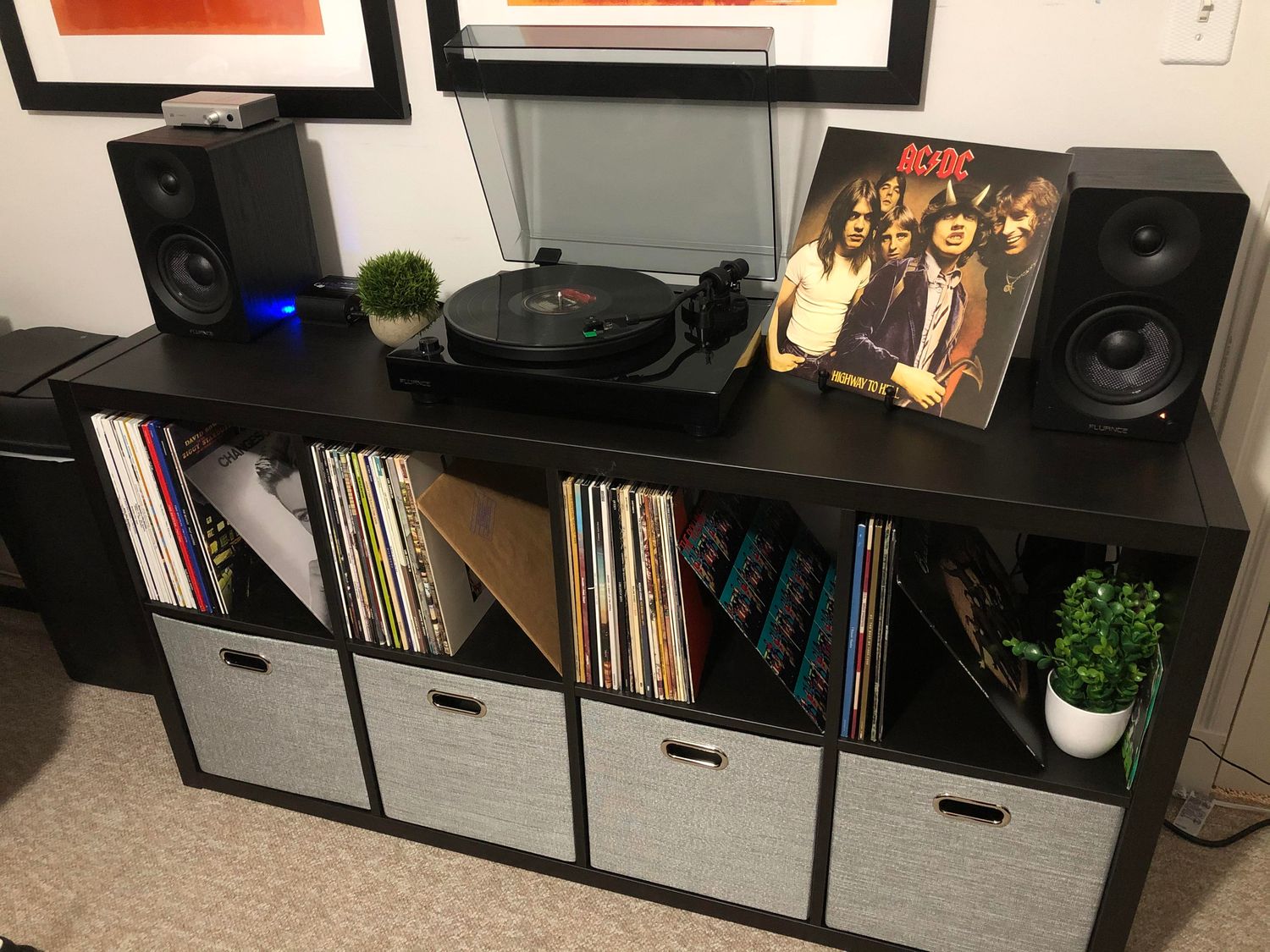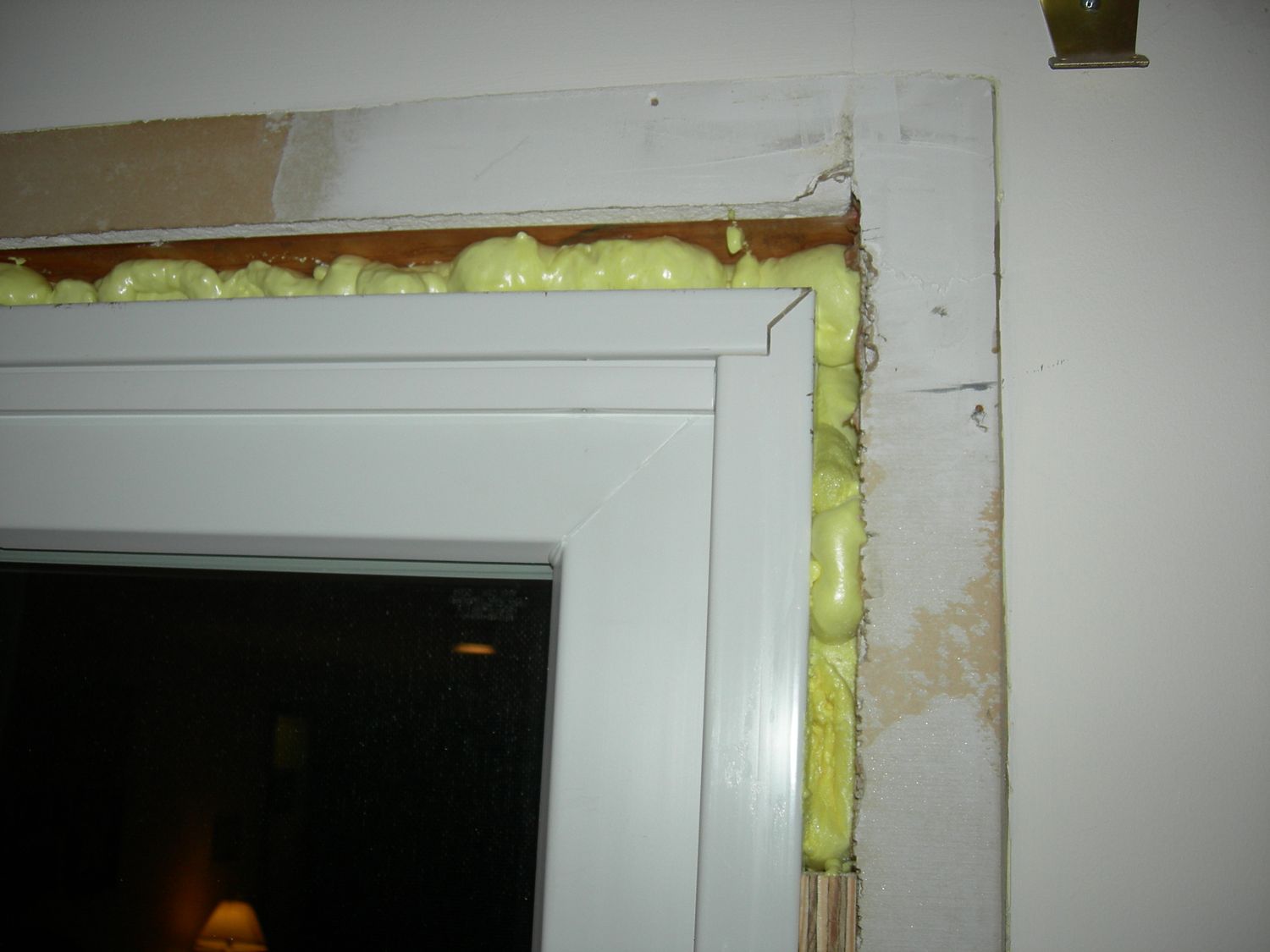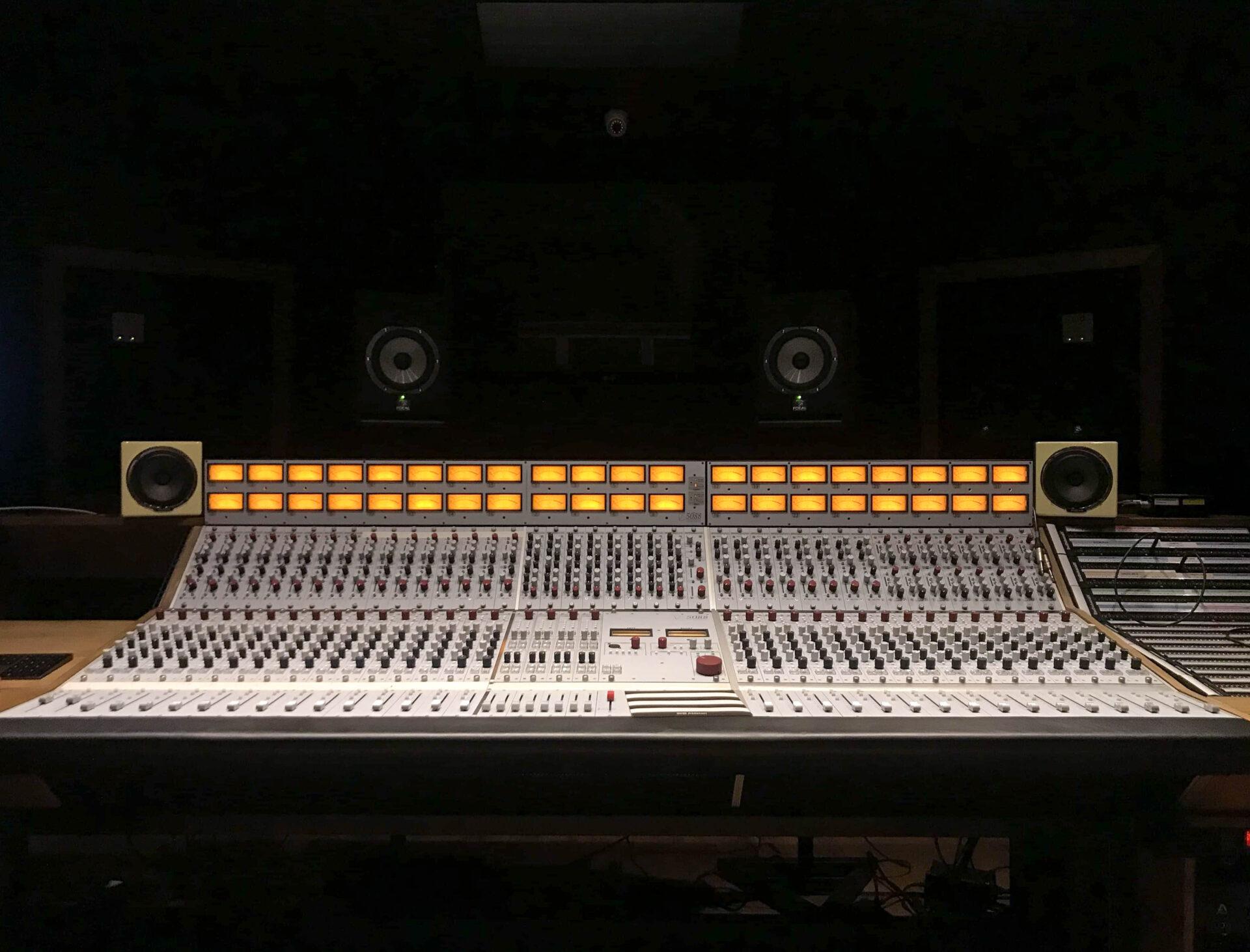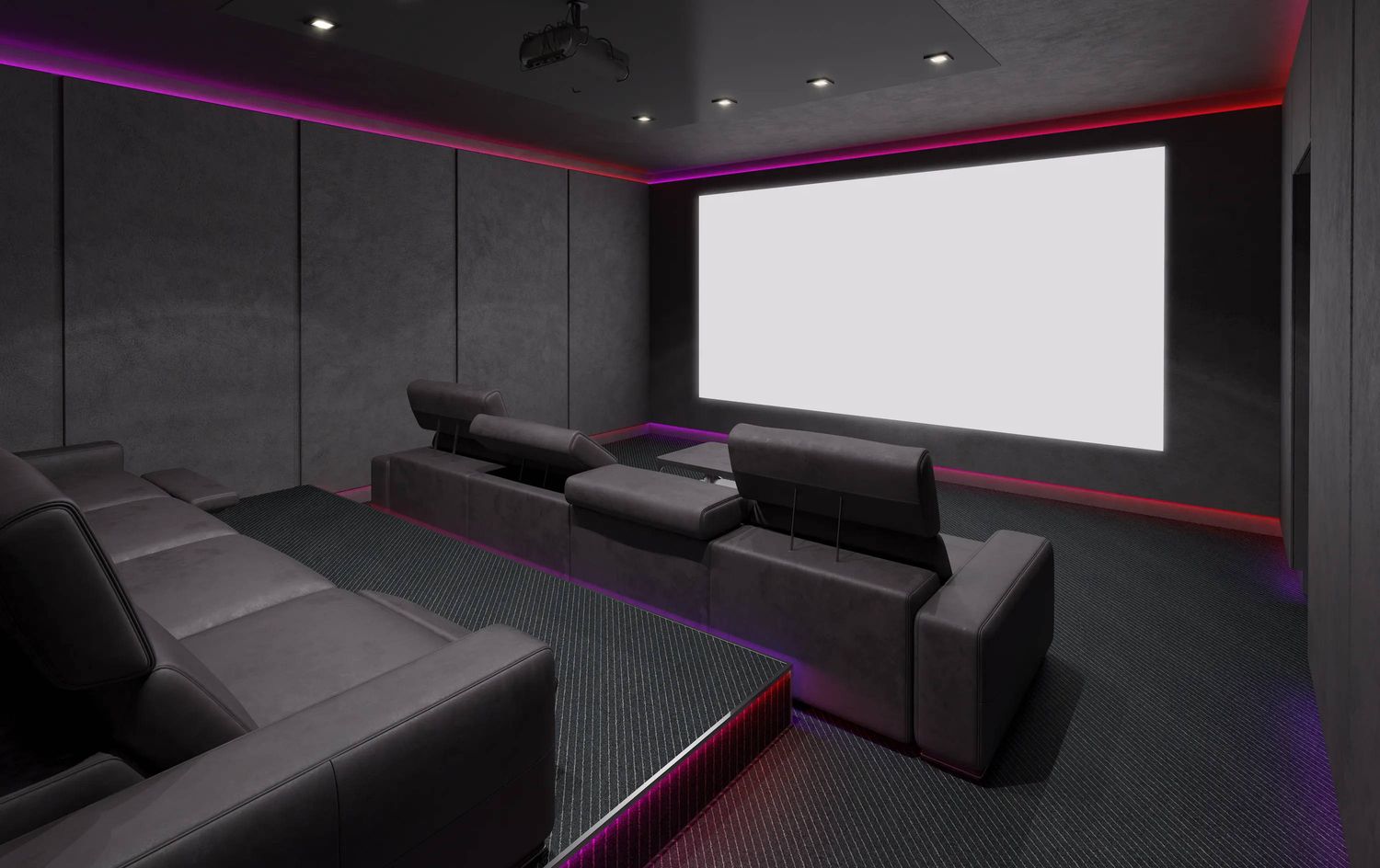Home>Production & Technology>Soundproofing>How Much Soundproofing Do I Need
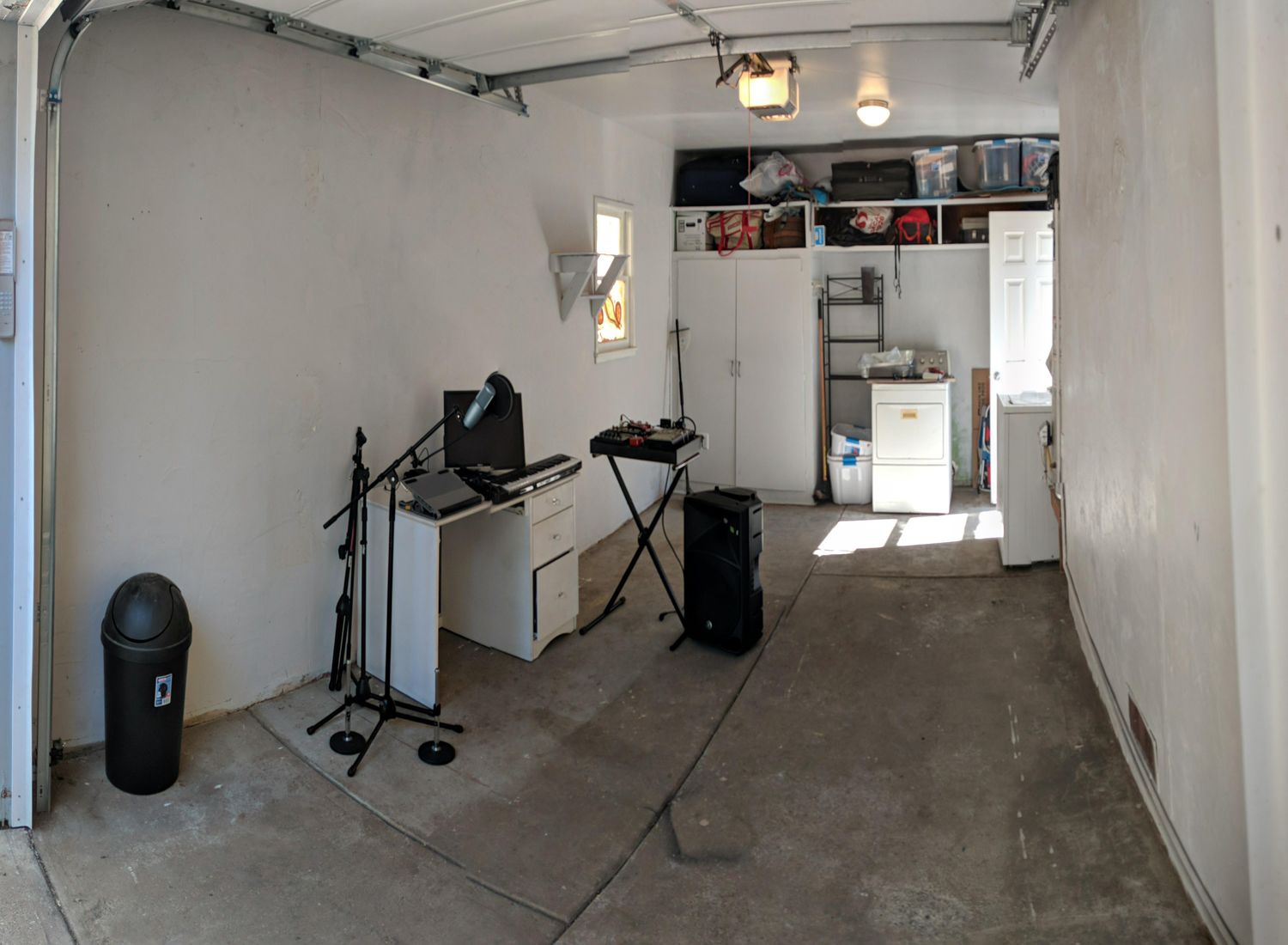

Soundproofing
How Much Soundproofing Do I Need
Published: January 26, 2024
Find out the perfect amount of soundproofing you need for a peaceful environment with our comprehensive guide on soundproofing.
(Many of the links in this article redirect to a specific reviewed product. Your purchase of these products through affiliate links helps to generate commission for AudioLover.com, at no extra cost. Learn more)
Table of Contents
Introduction
Have you ever found yourself struggling to concentrate or relax due to the noise from the outside world? Whether it’s the sound of traffic, construction, or noisy neighbors, unwanted noise can be a major source of frustration and distraction. That’s where soundproofing comes in.
Soundproofing is the process of reducing or eliminating the transmission of sound from one area to another. It involves using various materials and techniques to create a barrier that prevents sound waves from entering or escaping a space. Whether you want to create a tranquil home office, a peaceful bedroom, or a professional recording studio, soundproofing can greatly enhance your quality of life.
Understanding the basics of soundproofing is essential before embarking on any soundproofing project. By assessing your needs, evaluating the noise levels, and selecting the appropriate materials, you can effectively soundproof your space and enjoy a quieter and more peaceful environment.
In this article, we will delve into the world of soundproofing and help you determine how much soundproofing you need for your specific situation. We will explore the factors you need to consider, such as noise sources and the types of materials available. By the end of this article, you’ll have a clearer understanding of the amount of soundproofing required to create an ideal acoustic environment.
Understanding Soundproofing
Before diving into how much soundproofing you need, it’s important to have a solid understanding of the concept of soundproofing itself. Soundproofing involves creating barriers that minimize the transmission of sound waves. It aims to reduce both airborne noise, such as voices or loud music, and impact noise, such as footsteps or vibrations.
There are two main types of soundproofing: sound absorption and sound blocking. Sound absorption refers to materials that absorb sound energy, reducing echo and reverberation within a room. These materials are commonly used in recording studios or home theaters to improve the acoustics of the space. Sound blocking, on the other hand, focuses on preventing sound from entering or leaving a room. This is achieved by using dense and heavy materials that effectively block sound waves.
When it comes to soundproofing, it’s important to note that achieving complete silence is nearly impossible. Soundproofing aims to minimize noise levels, creating a more peaceful and comfortable environment. The effectiveness of soundproofing materials and techniques can vary depending on factors such as noise source, frequency, and the structure of the building.
Soundproofing techniques can include adding insulation to walls, floors, and ceilings, installing acoustic panels or foam, sealing gaps and cracks, and using double or triple-glazed windows. Additionally, soundproof doors and soundproof curtains can help to further reduce noise transmission.
Understanding the principles of soundproofing can help you make informed decisions about the amount and type of soundproofing you need in your space. By considering the noise sources, evaluating the current noise levels, and identifying the areas that require the most attention, you can effectively create a quieter and more enjoyable environment.
Factors to Consider
When determining how much soundproofing you need, there are several factors to consider. Understanding these factors will help you make informed decisions about the materials and techniques you should employ.
Noise Sources: Start by identifying the primary sources of noise in your environment. Is it traffic noise, noisy neighbors, or loud appliances? Understanding the types of noise you want to block or reduce will guide your soundproofing efforts.
Room Size and Shape: The size and shape of the room can affect how sound waves travel. Larger or irregularly shaped rooms may require additional soundproofing measures to ensure optimal noise reduction.
Budget: Consider your budget for soundproofing. The amount you are willing to invest will impact the materials and techniques you can use. There are both cost-effective and more expensive options available, so it’s important to find the right balance between effectiveness and affordability.
Building Materials: The construction materials used in your building will also play a role in determining the amount of soundproofing needed. For example, older buildings with thin walls may require more extensive soundproofing compared to newer constructions with better insulation.
Noise Level Tolerance: Consider your personal tolerance for noise. Some individuals are more sensitive to noise than others. If you require complete silence or have specific noise level requirements, you may need to invest in more advanced soundproofing techniques.
Long-term Goals: Think about your long-term goals for the space you want to soundproof. Are you planning to convert a room into a home theater or recording studio? Or do you simply want to create a peaceful and quiet living area? Understanding your long-term goals will help you determine the level of soundproofing needed.
Professional Advice: If you are unsure about the amount of soundproofing you need or want to ensure the best results, consider seeking professional advice. Soundproofing experts can assess your space, advise on the appropriate materials and techniques, and provide customized recommendations based on your specific needs.
By considering these factors, you can determine the level of soundproofing required for your space. Keep in mind that it’s important to strike a balance between your budget, noise reduction goals, and the specific requirements of your environment.
Evaluating Noise Levels
Before deciding on the amount of soundproofing you need, it’s crucial to evaluate the existing noise levels in your space. This assessment will help you understand the magnitude of the problem and guide your soundproofing efforts.
1. Measuring Decibel Levels: Decibels (dB) are used to quantify the intensity of sound. You can use a sound level meter to measure the noise levels in different areas of your space. This will give you a numerical value that represents the amount of sound present.
2. Identifying Noise Peaks: Along with measuring overall decibel levels, it’s important to identify specific noise peaks. These are sudden spikes in noise that may be particularly bothersome. For example, if you live near a busy road, the sound of honking horns or sirens may be the main issue. By pinpointing these noise peaks, you can focus your soundproofing efforts accordingly.
3. Time and Frequency of Noise: Take note of when the noise is most prominent. Does it occur primarily during the day, at night, or is it constant? Additionally, pay attention to the frequency range of the noise. Low-frequency sounds, such as bass or rumbling noises, require different soundproofing techniques compared to high-frequency sounds like voices or squeaks.
4. Sound Transmission Routes: Determine how the noise is entering or leaving your space. Are there specific pathways, such as windows, vents, or thin walls, that are contributing to the noise problem? By identifying the sound transmission routes, you can focus on reinforcing those areas with appropriate soundproofing materials.
5. Subjective Perception: While objective measurements are helpful, keep in mind that individuals may have varying levels of sensitivity to noise. Take into account your personal perception of the noise and the impact it has on your comfort and well-being.
Evaluating noise levels will give you a clearer picture of the extent of the problem and help you determine the level of soundproofing required. It will also assist you in identifying specific areas or components of the space that need the most attention. By thoroughly assessing the noise levels, you can strategically plan your soundproofing project and achieve the desired results.
Selecting Soundproofing Materials
Once you have evaluated the noise levels and determined the amount of soundproofing needed, it’s time to consider the various materials available for soundproofing. Choosing the right materials is crucial to effectively block or reduce noise transmission. Here are some common options:
1. Mass-Loaded Vinyl (MLV): MLV is a dense and flexible material that is excellent for blocking sound. It can be installed as a barrier on walls, floors, and ceilings to prevent noise from passing through. MLV is particularly effective against airborne noise and is often used in recording studios, theaters, and residential applications.
2. Acoustic Foam Panels: Acoustic foam panels are designed to absorb sound waves and reduce echo and reverberation within a space. They are commonly used in recording studios, home theaters, and other areas where the focus is on optimizing the acoustics of the room. Acoustic foam panels are available in various designs and thicknesses to suit different needs.
3. Soundproof Insulation: Insulation materials, such as rockwool or fiberglass, can be installed within walls, floors, and ceilings to improve soundproofing. These materials work by reducing airborne noise and absorbing sound energy. Soundproof insulation is useful in blocking sounds from neighboring rooms or outside sources.
4. Soundproof Curtains or Blinds: Soundproof curtains or blinds are an effective and convenient option for reducing noise entering or leaving through windows. These specialized curtains are made with heavy and dense fabrics that absorb sound and create a barrier to block external noise. They can be a cost-effective solution for soundproofing windows in residential and commercial spaces.
5. Weatherstripping and Sealants: Gaps and cracks in doors, windows, and walls can contribute to noise transmission. Weatherstripping materials and sealants can be used to seal these gaps and create a more airtight environment. This will help in reducing noise leakage and improving the overall effectiveness of soundproofing measures.
It’s important to note that the best soundproofing results are often achieved by combining multiple materials and techniques. Each space is unique, and the choice of materials should be tailored to address the specific noise concerns and structural characteristics of the area.
When selecting soundproofing materials, consider factors such as their effectiveness against different types of noise, installation requirements, durability, and maintenance. Additionally, consult with soundproofing experts or suppliers who can provide guidance based on your specific needs and budget.
By selecting the right soundproofing materials, you can significantly reduce noise transmission and create a more peaceful and comfortable environment in your home or office.
Determining the Amount of Soundproofing Needed
When it comes to soundproofing, determining the amount of soundproofing needed for your space is crucial. This will ensure that you achieve the desired level of noise reduction without overspending or over-engineering the project. Here are some steps to help you determine the appropriate amount of soundproofing:
1. Assess the Noise Levels: Start by assessing the current noise levels in your space. Use a sound level meter to measure the decibel levels and identify any noise peaks. This will give you a baseline to understand the extent of the noise problem.
2. Identify Key Noise Sources: Identify the primary sources of noise that are causing the most disturbance. Is it traffic noise, neighbors, or something else? Understanding the specific noise sources will help you focus your soundproofing efforts on the areas that need it the most.
3. Set Noise Reduction Goals: Determine your desired level of noise reduction. Consider factors such as your tolerance for noise, the purpose of the room, and any specific noise regulations or guidelines you need to adhere to. This will help you set realistic goals for the amount of soundproofing required.
4. Consider the Construction of the Space: Evaluate the construction of your space, including the walls, floors, and ceilings. Determine the existing sound insulation properties and identify any weak points or areas prone to noise leakage. Understanding the structural characteristics of the space will guide your soundproofing decisions.
5. Research Soundproofing Techniques and Materials: Research different soundproofing techniques and materials available in the market. Consider the effectiveness, cost, and installation requirements of each option. Determine which materials and techniques align with your noise reduction goals and budget.
6. Consult with Soundproofing Experts: If you are unsure about the amount of soundproofing needed, consider consulting with soundproofing experts. They can assess your space, provide tailored recommendations, and help you determine the appropriate amount of soundproofing required.
7. Start with Incremental Improvements: It’s often advisable to start with incremental improvements and assess the impact before investing in extensive soundproofing measures. Begin with sealing gaps and cracks, adding weatherstripping, or using soundproof curtains. Monitor the noise levels and determine if further soundproofing is necessary.
By following these steps, you can determine the appropriate amount of soundproofing needed for your space. Remember that the level of soundproofing should be based on your specific noise reduction goals, budget, and the characteristics of your environment. A systematic and thoughtful approach will ensure that you achieve the desired level of noise reduction and create a more peaceful and enjoyable space.
Recommendations for Different Areas
The amount of soundproofing needed can vary depending on the specific area of your space. Different areas have unique noise concerns and requirements. Here are some recommendations for soundproofing different areas:
1. Bedrooms: Bedrooms should be a peaceful retreat for rest and relaxation. To minimize noise disturbance, consider using soundproof curtains or blinds to block out external noise from windows. Additionally, use acoustic foam panels on the walls to reduce echo and absorb sound within the room. Make sure to seal any gaps around doors and windows to prevent noise leakage.
2. Home Offices: Creating a quiet and focused atmosphere in a home office is essential for productivity. Use soundproof insulation in the walls and ceiling to reduce ambient noise from other parts of the house. Consider installing a solid-core door and sealing any gaps to create a soundproof barrier. Acoustic foam panels or soundproof curtains can be used to further reduce reverberation and echo within the office space.
3. Living Areas: Living areas, such as living rooms or entertainment spaces, can benefit from soundproofing to enhance the overall enjoyment of the space. Soundproof curtains or blinds can be used to minimize external noise coming through windows. Use thicker rugs or carpets and upholstered furniture to absorb sound within the room. Consider using soundproof insulation in walls or installing acoustic panels for a more comprehensive noise reduction solution.
4. Music or Recording Studios: Music or recording studios require a high level of soundproofing to achieve optimal acoustics. In addition to soundproofing insulation in the walls, it is recommended to use double-layered drywall with a viscoelastic layer in between, known as a “room within a room” construction. This helps to isolate the studio from external noise. Acoustic panels and diffusers can be strategically placed to control sound reflections and improve the recording environment.
5. Home Theaters: Soundproofing a home theater is crucial for an immersive and high-quality audio experience. Use specialized acoustic panels or diffusers on the walls to reduce sound reflections and enhance audio clarity within the space. Insulate the walls and ceiling with soundproofing materials to prevent sound from escaping or external noise from entering the theater. Consider using double-glazed windows or soundproof curtains to minimize outside noise interference.
It’s important to note that these recommendations are general guidelines and may vary depending on the specific characteristics of your space and individual preferences. Consulting with soundproofing experts or professionals in specialized areas, such as recording studios or home theaters, can provide more tailored recommendations based on your unique requirements.
By implementing these soundproofing recommendations, you can create more peaceful and enjoyable environments in different areas of your space, tailored to their intended use and noise reduction goals.
Conclusion
Soundproofing your space can greatly improve your quality of life by reducing unwanted noise and creating a more peaceful and comfortable environment. By understanding the basics of soundproofing and evaluating your specific needs, you can determine the amount of soundproofing required to achieve your desired level of noise reduction.
Factors such as noise sources, room size and shape, budget, building materials, and noise tolerance should be considered when deciding on the level of soundproofing needed. Evaluating noise levels and identifying key noise sources will help you focus your soundproofing efforts on the areas that require the most attention. Selecting the right soundproofing materials, such as mass-loaded vinyl, acoustic foam panels, or soundproof curtains, will further enhance the effectiveness of your soundproofing project.
By following a systematic approach and considering the unique requirements of different areas in your space, such as bedrooms, home offices, living areas, or specialized rooms like music studios or home theaters, you can tailor the soundproofing measures to meet your specific needs.
Remember that achieving complete silence is often unrealistic, but with the right soundproofing techniques and materials, you can significantly reduce noise transmission and create a more peaceful atmosphere. If you are unsure about the amount of soundproofing needed, don’t hesitate to seek professional advice or consult soundproofing experts who can provide customized recommendations based on your specific situation.
Investing in soundproofing is an investment in your well-being and can greatly enhance your living or working environment. Enjoy the benefits of a quieter space and experience improved concentration, relaxation, and overall enjoyment by incorporating soundproofing measures into your space.



